August 2024
The global plant asset management market size accounted for USD 7.99 billion in 2024, grew to USD 9.22 billion in 2025 and is projected to surpass around USD 33.48 billion by 2034, representing a healthy CAGR of 15.41% between 2024 and 2034. The North America plant asset management market size is calculated at USD 2.96 billion in 2024 and is expected to grow at a fastest CAGR of 15.41% during the forecast year.
The global plant asset management market size is calculated at USD 7.99 billion in 2024 and is anticipated to reach around USD 33.48 billion by 2034, expanding at a CAGR of 15.41% from 2024 to 2034. The demand for the plant asset management market is increasing due to the rising demand for digitalization in the industrial sector. Many companies are adopting these systems to increase their operational efficiency.
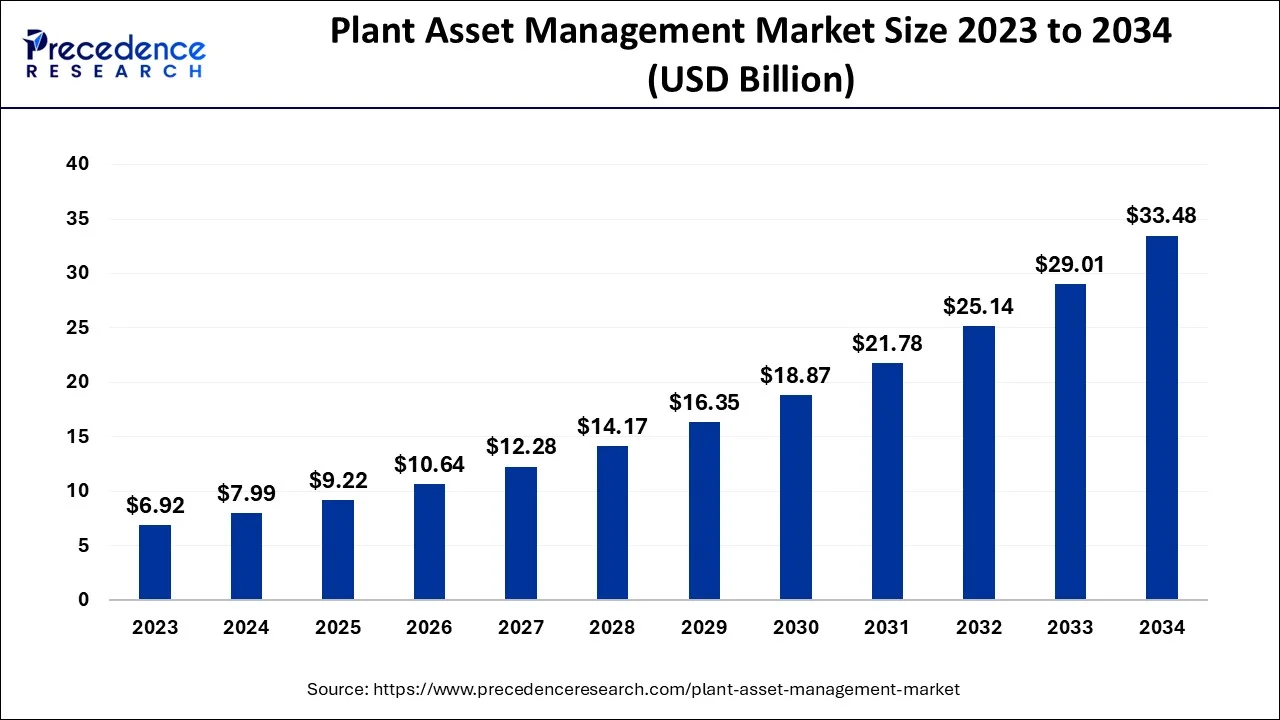
The U.S. plant asset management market size is evaluated at USD 2.22 billion in 2024 and is projected to be worth around USD 9.35 billion by 2034, growing at a CAGR of 15.47% from 2024 to 2034.
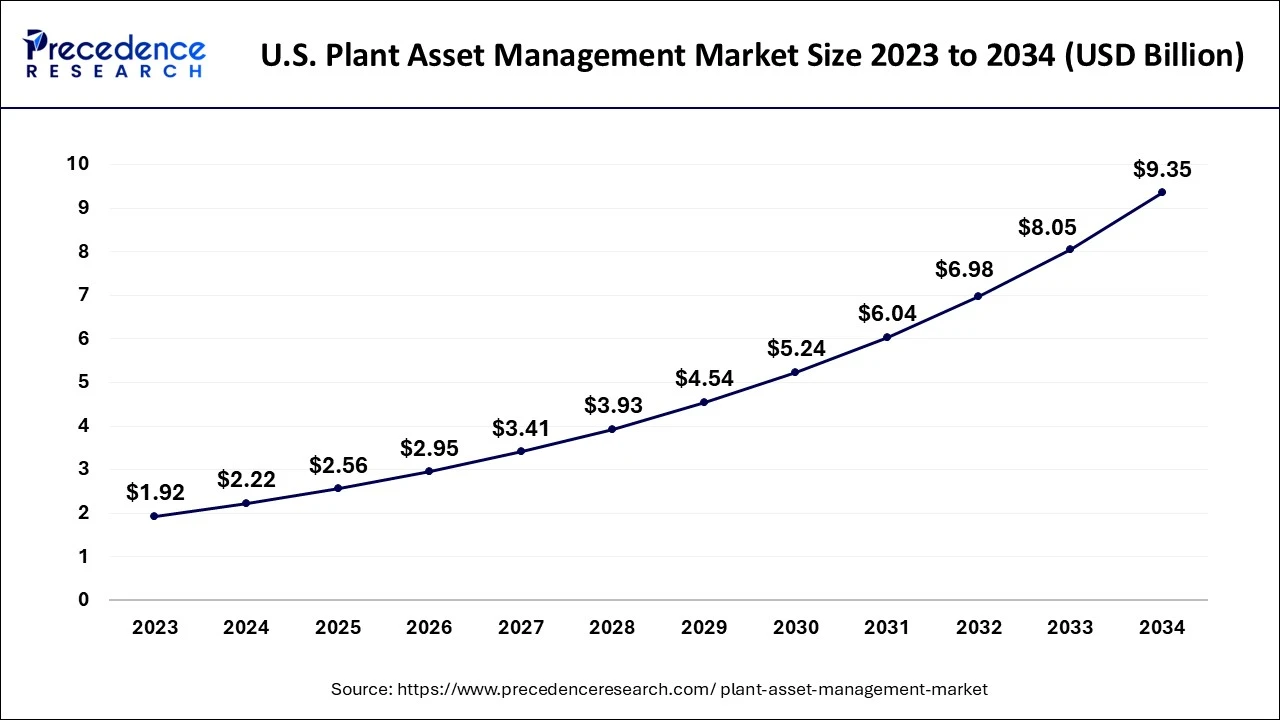
North America dominated the global plant asset management market in 2023. The dominance of the region is attributed to the increasing advancements in the industries in the United States and Canada. The increasing R&D investments are expected to drive market growth in the upcoming years. The governments in the region are focusing on adopting renewable energy. Additionally, the region is home to advanced technologies, which creates several business opportunities for the companies.
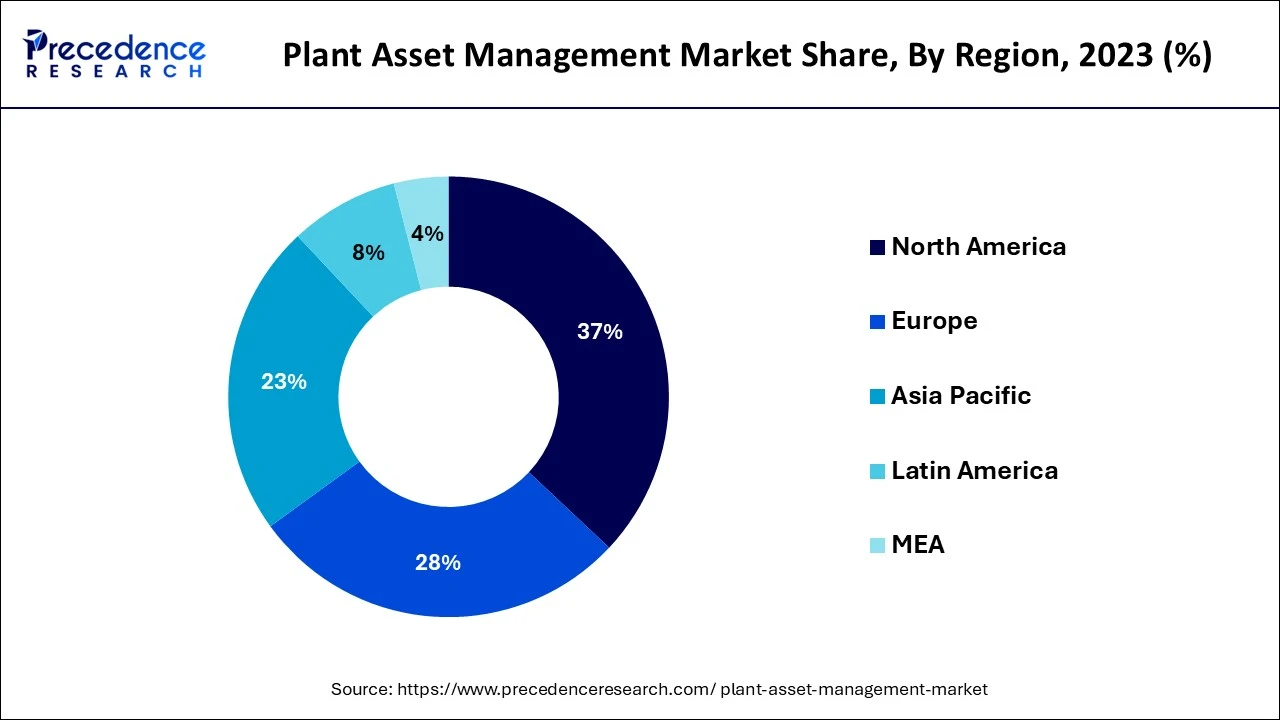
Asia Pacific is anticipated to show significant growth in the plant asset management market during the forecast period of 2024 to 2034. The growth of the region is attributed to developing countries like China, India, and Japan, which are witnessing rapid industrialization. The region is expected to stand out as the most opportunistic in the upcoming years due to the increasing automation throughout various industries.
Plant asset management (PAM) refers to a strategic process that aims to manage and optimize the lifecycle of physical assets in industrial plants like machinery, equipment, and overall infrastructure. The plant asset management market is growing efficiently due to the rising need for monitoring and maintenance of the assets, which play a crucial role in managing operational efficiency. PAM includes various software and sensors that conduct timely tasks, which help maintain overall performance. Many companies are adopting these solutions for longevity.
How is AI Revolutionizing the Plant Asset Management Market?
The emergence of technologies like Artificial Intelligence (AI) and machine learning (ML) is significantly transforming the market. AI algorithms play a crucial role in predictive maintenance, which monitors the quality of the assets and helps detect failures that could save additional costs. Many companies are adopting these technologies to help them manage their workflow while saving on additional operational costs. The capability of AI algorithms to analyze huge datasets is expected to significantly boost the performance of the asset by optimizing efficiency, which can help improve productivity.
| Report Coverage | Details |
| Market Size by 2034 | USD 33.48 Billion |
| Market Size in 2024 | USD 7.99 Billion |
| Market Size in 2025 | USD 9.22 Billion |
| Market Growth Rate from 2024 to 2034 | CAGR of 15.41% |
| Largest Market | North America |
| Base Year | 2023 |
| Forecast Period | 2024 to 2034 |
| Segments Covered | Component, Deployment, Asset Type, End-user, and Regions |
| Regions Covered | North America, Europe, Asia-Pacific, Latin America and Middle East, & Africa |
Advancements in Industry 4.0
Rapid digitalization and advancements are playing a crucial role in transforming the industry by adopting smart technologies that improve operations. These advancements are increasing the adoption of smart sensors in industrial applications that help monitor machinery and equipment without any need for human intervention. The plant asset management market is growing efficiently due to the rising adoption of smart technologies like cloud computing that offer scalability. Additionally, the rising adoption of robotics in Industry 4.0 is expected to boost market growth.
Increasing need for operational efficiency
The rising focus on managing the overall costs is leading to the adoption of PAM solutions that help enhance the overall manufacturing process. Companies are focusing on utilizing maximum assets that help in fulfilling the market demand. The plant asset management market is gaining significant popularity as the rising focus helps improve productivity by ensuring the smooth management of assets. Additionally, the data-driven skills in the PAM solutions are also expected to drive market growth in the upcoming years.
Higher initial investments
The use of advanced solutions and technologies in the market has helped the growth of many companies. The plant asset management market requires a higher initial investment which cannot be affordable for many small-sized companies. This could hamper the market expansion which might reduce the demand for PAM solutions in underdeveloped regions. The return on investment can also consume more time which cannot be affordable for small companies.
Adoption of cloud-based solutions
The rapid demand for digitalization in the industrial sector is leading to the need for effective solutions to manage workflow. The plant asset management market is expected to bring many opportunities due to the adoption of cloud solutions, which offer scalable and flexible solutions that help optimize operations. Many companies are investing in the adoption of cloud-based solutions as they help in real-time data processing.
Aging of industrial infrastructure
The presence of well-established companies in the market often requires the need for monitoring. Many companies are investing heavily towards enhancing their assets which can maintain the workflow of the operations. The rising demand for predictive maintenance in the plant asset management market also increases the need for PAM solutions which will predict the equipment failures in the old industrial companies.
The solution segment marked its dominance over the plant asset management market in 2023. These components include software and tools that help in enhancing the processes in the market. The dominance of the segment is attributed to companies' increasing technological adoptions, which help them boost their performance. The complex regulations in the manufacturing industry are also one of the major factors that drive the need for effective solutions. The adoption of these solutions will help assess the overall performance and reduce operational costs.
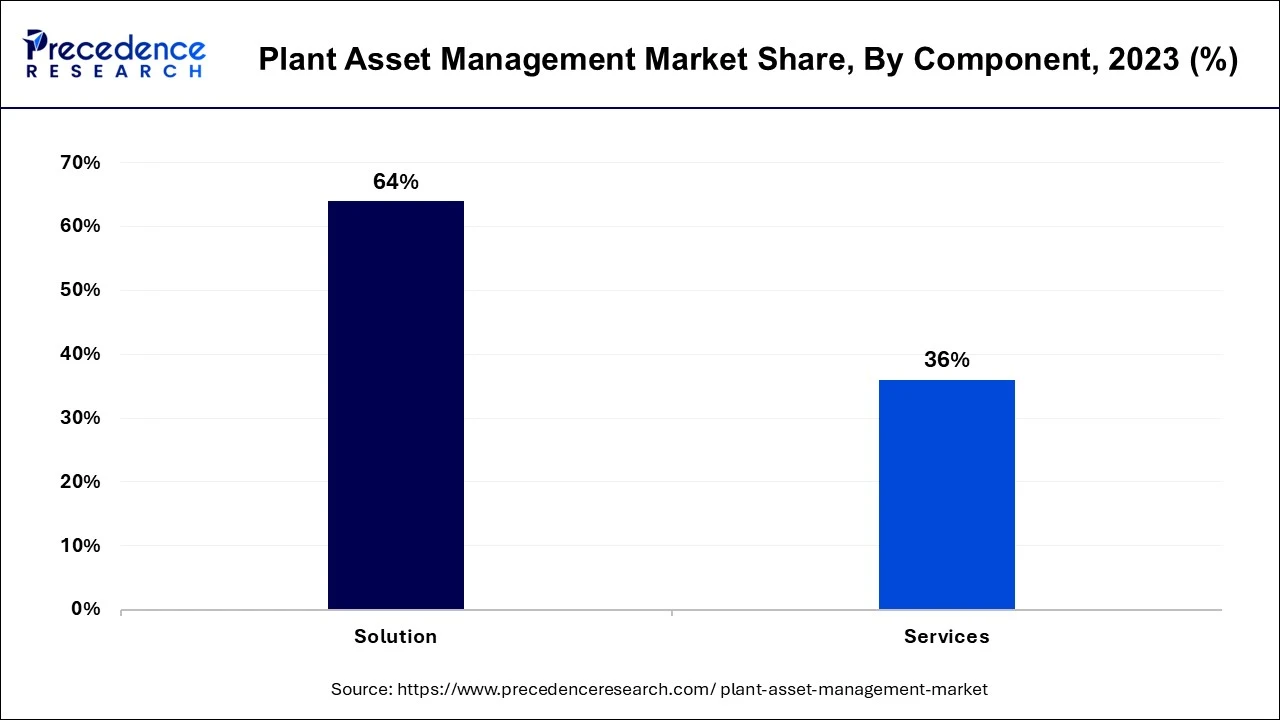
The services segment is expected to grow at the fastest rate in the plant asset management market during the forecast period of 2024 to 2034. The growth of the segment is attributed to the increasing need for professional services that give analysis through cloud-based solutions. Rapid technological advancements play a crucial role in the development of these pieces of training that help in using plant asset solutions effectively. Additionally, the increasing demand for managed services is expected to play a crucial role in the market growth in the upcoming years.
The cloud segment stood the dominant in the global plant asset management market in 2023. The dominance of the segment is attributed to flexible and effective solutions provided by the cloud solutions, which do not require higher investments for a physical infrastructure. The market is witnessing rapid expansion due to the increasing adoption of cloud services, which can be deployed quickly, unlike others. The majority of companies adopt these services to help them manage operational costs.
The on-premise segment is anticipated to grow notably in the plant asset management market during the forecast period of 2024 to 2034. The growth of the market is attributed to rising data security concerns, which have led to the adoption of on-premise deployment. Large-size businesses are adopting these services rapidly, which helps them carry out their personalized operations.
The production assets segment led the global plant asset management market in 2023. The dominance of the segment is attributed to the mass production of machinery and equipment which are a main component in industrial applications. The huge consumer base leads to the rising demand for higher operational efficiency, creating a demand in the market. Additionally, there is an increasing need for real-time monitoring in various industries.
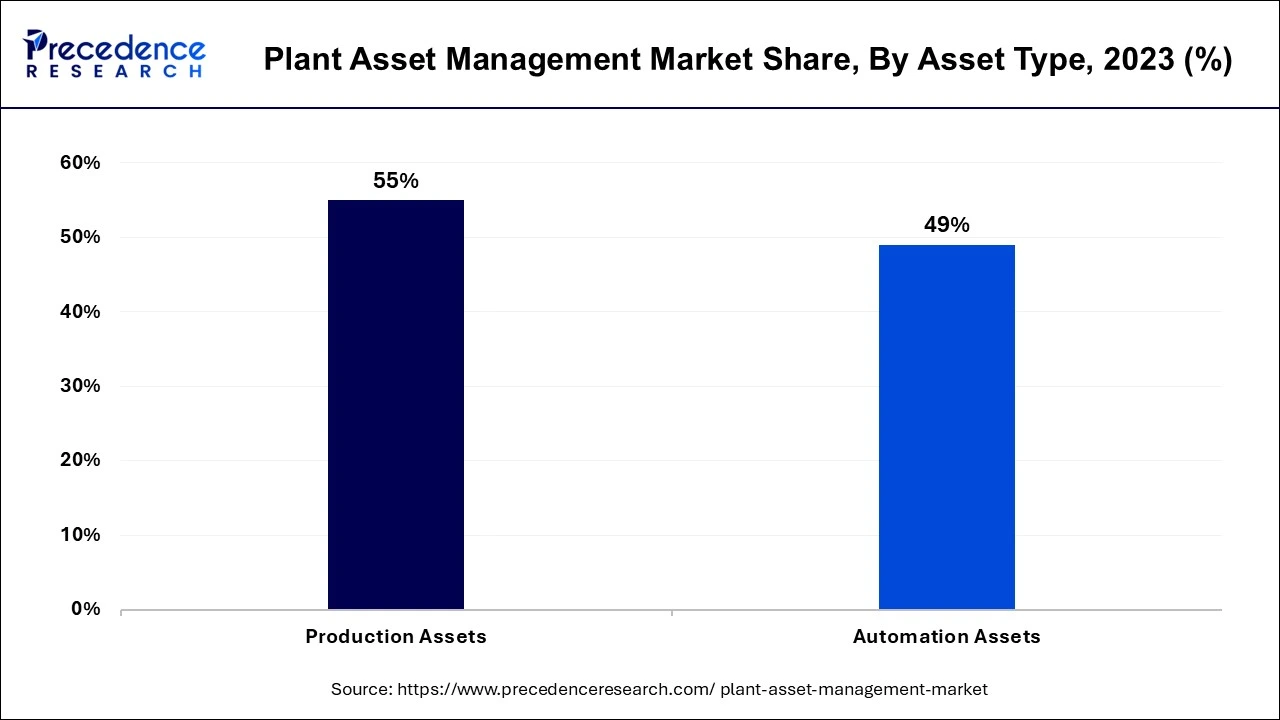
The automation assets segment is anticipated to grow at the highest CAGR in the plant asset management market during the forecast period of 2024 to 2034. The growth of the segment is attributed to the rising automation in multiple industries that are adopting robotics to improve productivity. Companies are adopting these technologies to help them increase their workflow without extending their operational costs.
The energy & power segment held the largest share of the plant asset management market in 2023. The dominance of the segment is attributed to the well-established infrastructure of power plants, turbines, and other renewable systems. The market is experiencing significant growth due to the increasing need for real-time monitoring of these plants. Companies are adopting these solutions. Additionally, increasing government initiatives toward the adoption of renewable energy have been observed in recent years.
The manufacturing segment is expected to grow at the fastest CAGR in the plant asset management market from 2024 to 2034. The rising automation in the market is leading to the need for PAM solutions. Companies are adopting technologies in manufacturing that help them reduce waste and maintain environmental regulations. Additionally, the increasing automation in the manufacturing process is also raising the demand for real-time monitoring.
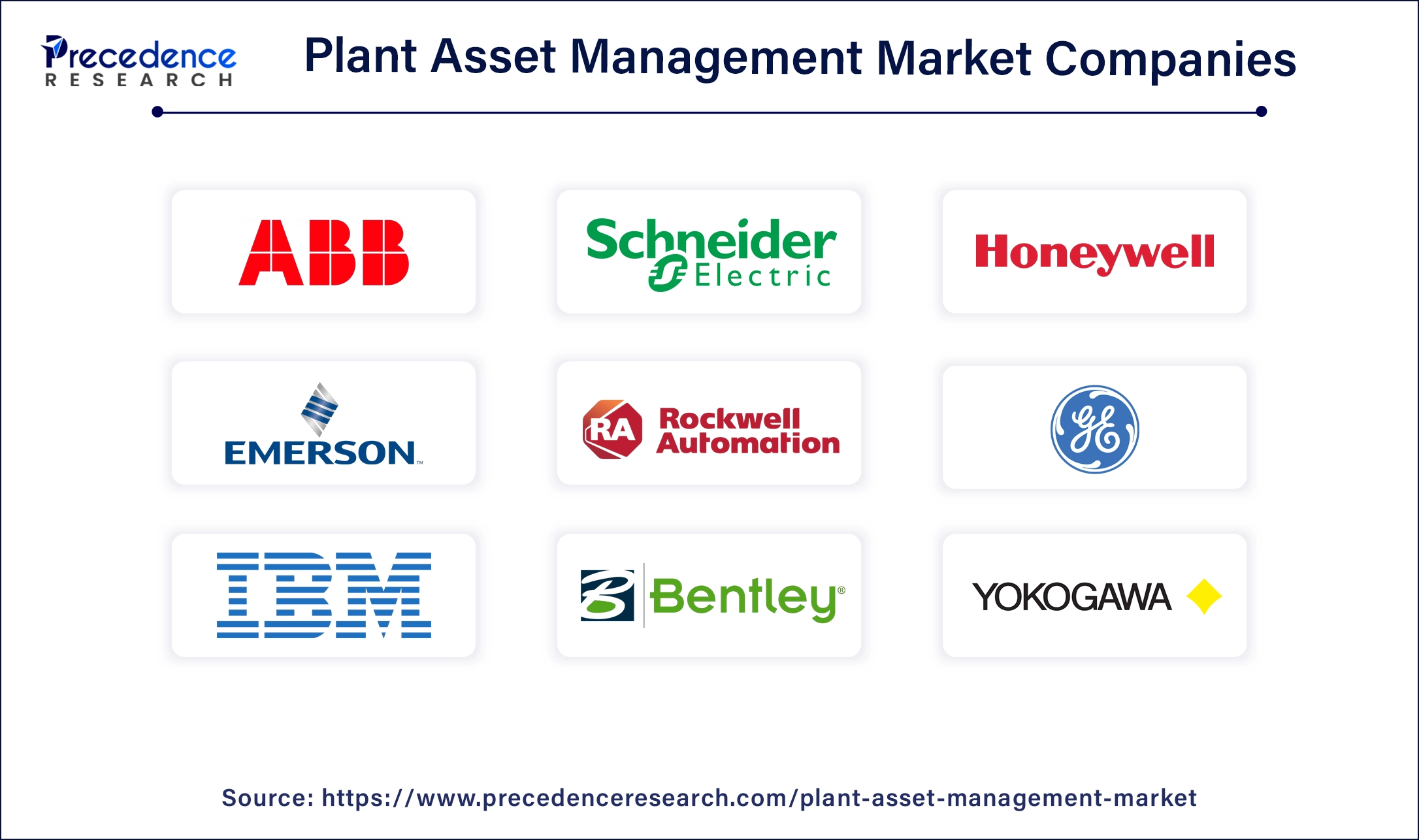
Segments Covered in the Report
By Component
By Deployment
By Asset Type
By End-user
By Geography
For inquiries regarding discounts, bulk purchases, or customization requests, please contact us at sales@precedenceresearch.com
No cookie-cutter, only authentic analysis – take the 1st step to become a Precedence Research client
August 2024
May 2024
June 2024
December 2024